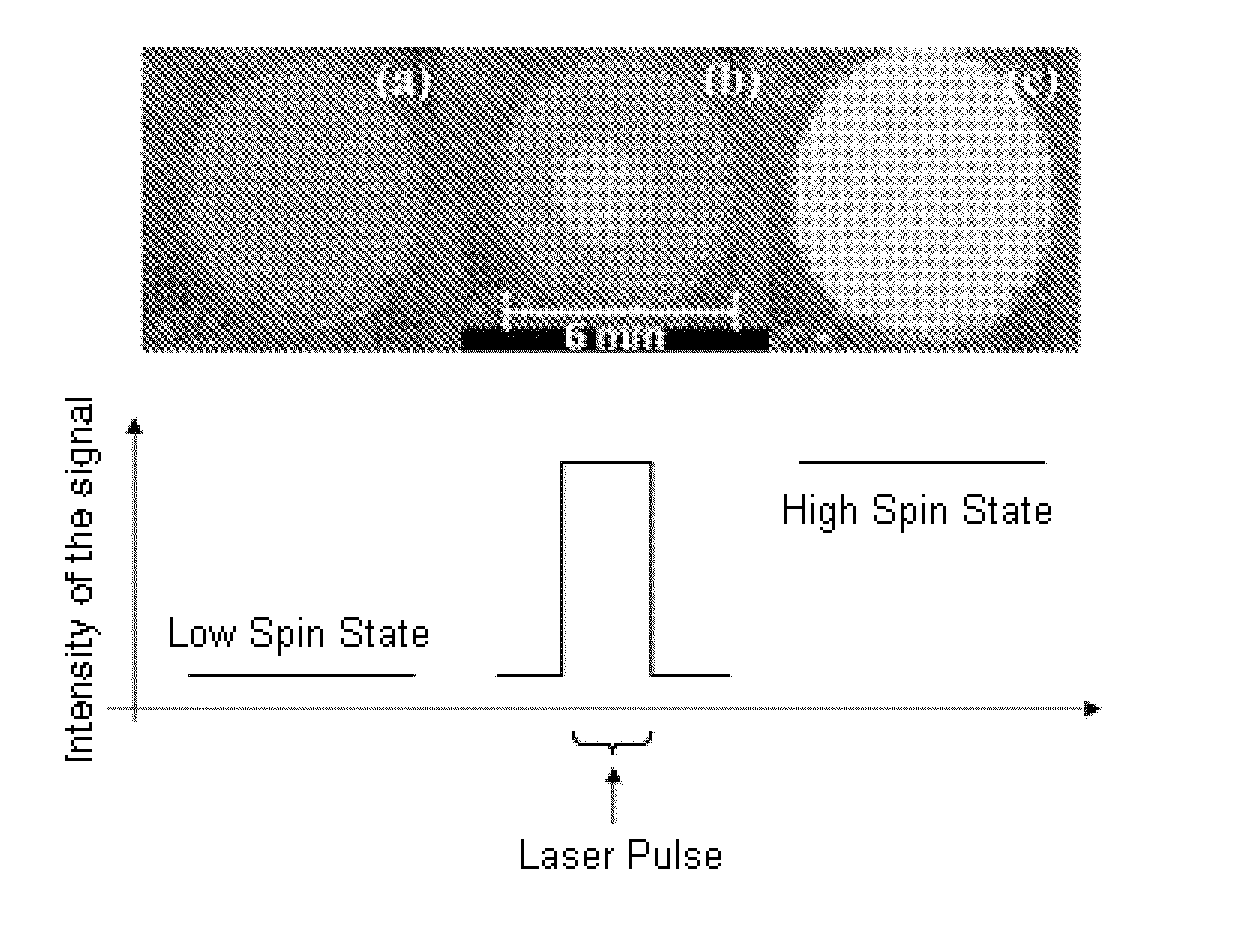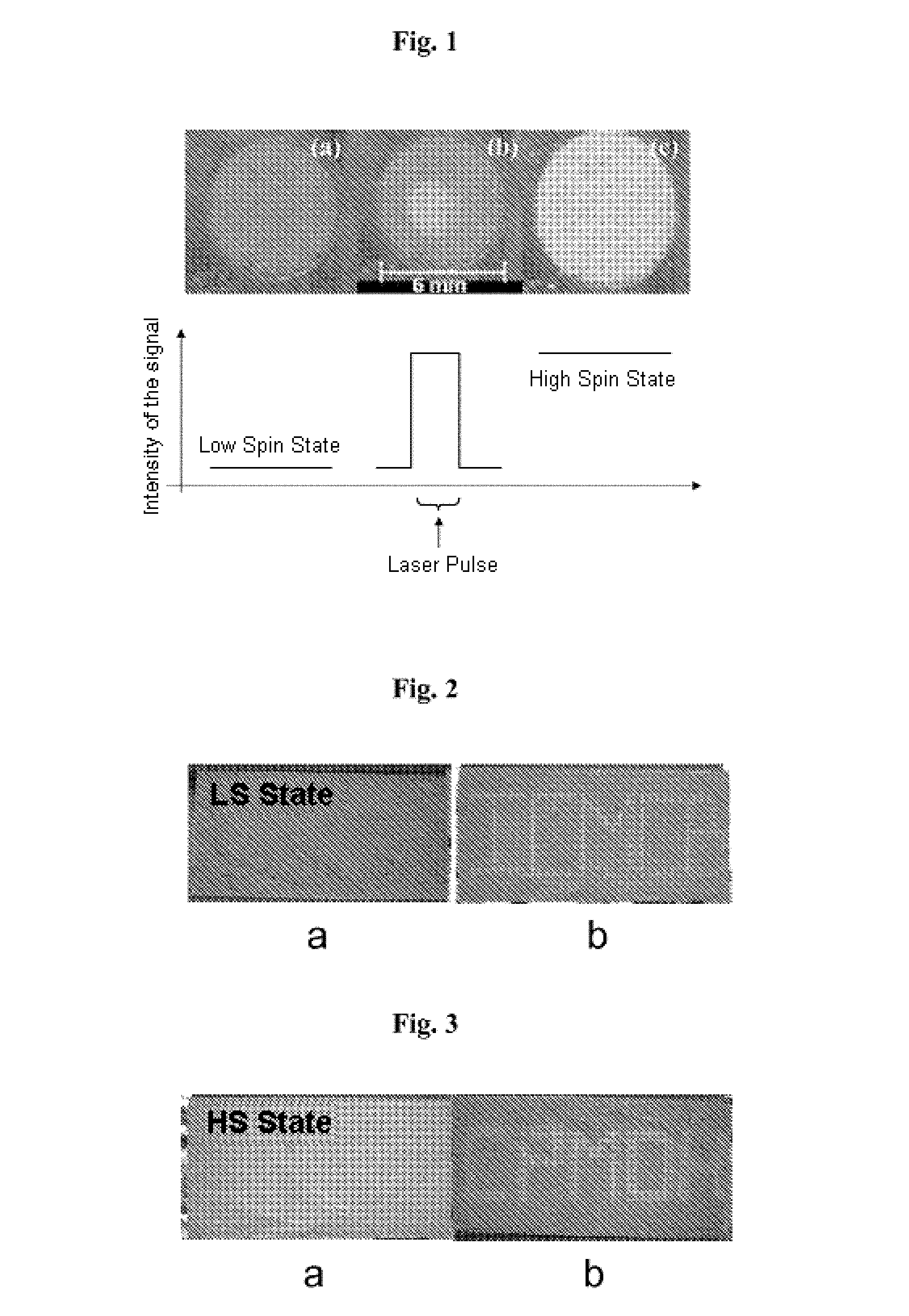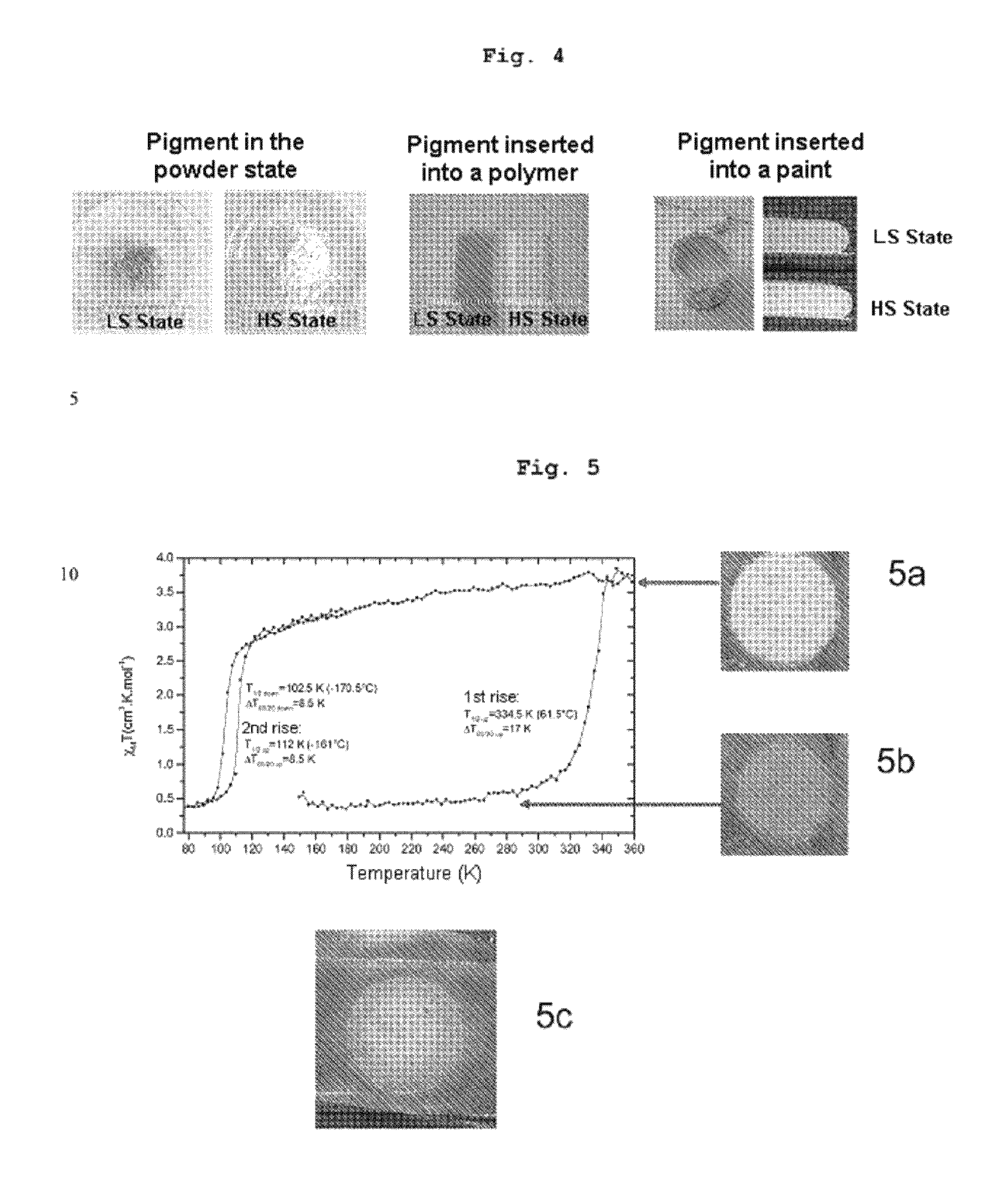Method for the thermal photoswitching of spin-transition materials, and uses thereof
- Summary
- Abstract
- Description
- Claims
- Application Information
AI Technical Summary
Benefits of technology
Problems solved by technology
Method used
Image
Examples
example 1
Photoswitching of a Spin-Transition Compound of the Family of the Iron(II) R-Triazole Compounds
[0132]In this example, the reversible photoswitching was carried out on the following compound: [Fe(NH2-Trz)3NO3].
[0133]The [Fe(NH2-Trz)3NO3] sample, in the form of a powder formed of micrometric grains, was placed under the laser radiation at a power of 150 mW·cm−2. The wavelength of the laser was 10.6 μm. The compound was exposed for only a few milliseconds.
[0134]The appended FIG. 1 is a photograph of the material before irradiation (1a), during laser irradiation (1b) and after irradiation (1c).
[0135]After photo-excitation, these compounds, pink in the LS state, become white in the HS state. It is observed that the compound has been completely photoswitched.
example 2
Photoswitching of a Spin-Transition Compound of the Family of the Iron(II) R-Triazole Compounds Inserted into a Polymer Matrix
[0136]In this example, the reversible photoswitching of [Fe(NH2-Trz)3NO3] was carried out after having inserted it into a polymer matrix composed of a colorless varnish for metals sold under the trade name Vernis Métaux, le Secret de l'Ebéniste®, by Syntilor, in a proportion of 5% by weight.
[0137]The sample was placed on a computer-controlled translation table. An interrupter, this also computer-controlled, made it possible to interrupt the laser illumination of the sample. The sweep rate, adjustable by a computer, was regulated at 1 cm·s−1 and the power of the laser was 100 mW·cm−2. The diameter of the laser beam was 1 mm. Irradiation was carried out at a wavelength of 10.6 μm.
[0138]In this example, letters were inscribed on the sample; each letter was inscribed by a single laser sweep, the laser beam being blocked before the inscription of each of the lette...
example 3
Photoswitching of a Spin-Transition Compound of the Family of the Iron(II) R-Triazole Compounds Inserted into a Spackling Filler Matrix (Plaster)
[0140]In this example, the reversible photoswitching of [Fe(NH2-Trz)3NO3] was carried out after having inserted it, in a proportion of 5% by weight, in a spackling filler matrix (plaster) composed of 1 g of plaster powder per 10 ml of ethanol.
[0141]The same inscription system as that used above in example 2 was also used in this example. The diameter of the laser beam on the sample was 2 mm. The sweep rate was regulated at 1 cm·s−1 and the power of the laser was regulated at 100 mW·cm−2. Irradiation was carried out at a wavelength of 10.6 μm. Each letter was written by a single laser sweep, the beam being blocked before the inscription of each of the letters.
[0142]The appended FIG. 3 is a photograph of the matrix incorporating the spin-transition material before irradiation (3a) and after irradiation (3b). In this case, the irradiation and ...
PUM
| Property | Measurement | Unit |
|---|---|---|
| Time | aaaaa | aaaaa |
| Length | aaaaa | aaaaa |
| Size | aaaaa | aaaaa |
Abstract
Description
Claims
Application Information
 Login to View More
Login to View More - R&D
- Intellectual Property
- Life Sciences
- Materials
- Tech Scout
- Unparalleled Data Quality
- Higher Quality Content
- 60% Fewer Hallucinations
Browse by: Latest US Patents, China's latest patents, Technical Efficacy Thesaurus, Application Domain, Technology Topic, Popular Technical Reports.
© 2025 PatSnap. All rights reserved.Legal|Privacy policy|Modern Slavery Act Transparency Statement|Sitemap|About US| Contact US: help@patsnap.com



